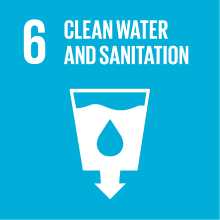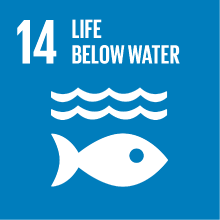ANALYTICAL METHODS AND APPLICATIONS WITH LAB
- Academic year
- 2018/2019 Syllabus of previous years
- Official course title
- ANALYTICAL METHODS AND APPLICATIONS WITH LAB
- Course code
- CM0506 (AF:281952 AR:159372)
- Modality
- On campus classes
- ECTS credits
- 9
- Degree level
- Master's Degree Programme (DM270)
- Educational sector code
- CHIM/01
- Period
- 1st Semester
- Course year
- 1
- Where
- VENEZIA
- Moodle
- Go to Moodle page
Contribution of the course to the overall degree programme goals
The second module is aimed at providing a knowledge of analytical chemistry that is used during the diagnosis and characterisation of archaeological, architectural and artistic artefacts. Analytical methods using chromatography and mass spectrometry (high and low resolution) will be studied in depth for both organic and inorganic compounds.
So the student will learn electrochemical, chromatographic and mass spectrometric methods for the characterisation of cultural artefacts. The student will also be introduced to the use of electrochemistry for the prevention and recovery of metallic objects from corrosive effects.
Expected learning outcomes
i. know the relationship between the redox behaviour of materials used during the production of cultural artefacts and electrochemical methods for their analysis.
ii. Know the electrochemical principles behind corrosive processes.
iii. Understand the use of chromatographic and mass spectrometric instrumental methods during analysis and materials used in producing cultural materials.
2. Capacity to apply knowledge and comprehension
i. understand the specificity and role of analytical chemistry methods (electrochemical, chromatographic and mass spectrometric) for diagnosis and conservation of cultural heritage.
ii. Know how to apply the concepts learnt to understand which method is most useful in the prevention and restoration of a metallic object that has undergone corrosive degradation.
3) Judgement skills.
i) Know how to comparatively evaluate the effectiveness of different investigative strategies and combine the information obtained from electrochemical, chromatographic and mass spectrometric instrumentation.
ii) Develop a critical capacity to evaluate the performance of analytical methods when studying and preventing the degradation of cultural heritage.
4. Communication skills
i) Learn to correctly use the terminology and the language used in the fields of electrochemistry and corrosion.
ii) Improve written communication skills by presenting a full report on the laboratory practical experiences.
5. Learning skills
i) the ability to acquire the basic elements of the topics taught by the teacher in class and through the laboratory experiences, and completing the learning process through the consultation of bibliographic and online sources.
Pre-requirements
Contents
Principles of electrochemistry. Potentials and electrochemical cells. Electric current and polarization of electrodes. Electrochemical analysis methods: potentiometry.
Dynamic electrochemical methods: solution voltammetry and solid particle voltammetry. Analysis of pigments, metals and alloys.
Corrosion and passivation of metals. Corrosion of alloys. Corrosion conditions: Pourbaix and Evans diagrams. Corrosion of archaeological bronzes. Protection techniques suitable for historical-artistic artifacts. Sacrificial anodes, protective films, corrosion inhibitors.
Module 2
Principles of preparative and analytical chromatography.
Liquid chromatography and gas chromatography
Principles of mass spectrometry.
Low and high resolution mass spectrometry
Hyphenated chromatographic-mass spectrometric techniques.
Mass spectrometry with an inductively coupled plasma source.
Laboratory experience
Electrochemical characterization and electrochromic properties of pigments. Galvanic and electrolytic cleaning of corroded coins. Evaluation of the use of corrosion inhibitors of copper and its alloys.
Chromatographic analysis by HPLC-DAD or color agents used in artifacts, use of Ion chromatography for the analysis of major anions and cations. Comparison of the results with ICP-MS analysis.
Referral texts
Modern analytical methods in art and archaeology / Enrico Ciliberto and Giuseppe Spoto editors
N. inv: CIS 3550 Codice alternativo: 805000003791 Coll: SCIENZE 930.102 MODAM
Analytical chemistry in archaeology / A.M. Pollard ... <et al.> N. inv: SCI 930 Codice alternativo: 805000003792 Coll: SCIENZE 930.109 POLLM
Lecture notes, frontal lessons and laboratory plus scientific papers used as case studies.
Assessment methods
The oral exam is divided into two parts, to evaluate learning of the two modules. It consists of a series of questions which the student must answer, demonstrating knowledge and know how by explaining the topics covered by the course.
Language usage and the ability to identify and critically evaluate analytical techniques and their application to cultural heritage will be evaluated.
Teaching methods
The teaching material used will be available on the "Moodle" platform of the University from where it can be downloaded.
Teaching language
Further information
2. Attention is paid to the benefits in terms of sustainability that the use of electrochemical methods allow by preventing corrosion and preserving highly valuable artefacts using techniques with a low environmental impact. This reduces the massive use of chemicals.
It is also underlined how the use of advanced analytical methods allows the analysis to be carried out while significantly reducing the quantities of both sample and reagents, with positive reflections on sustainability especially with regards to issues related to the production and disposal of chemicals for analytical use.3. 3. 3. Accessibility, Disability and Inclusion. Accommodation and support services for students with disabilities and students with specific learning impairments: Ca’ Foscari abides by Italian Law (Law 17/1999; Law 170/2010) regarding supportservices and accommodation available to students with disabilities. This includes students with mobility, visual, hearing and other disabilities (Law 17/1999), and specific learning impairments (Law 170/2010). In the case of disability or impairment that requires accommodations (i.e., alternate testing, readers, note takers or interpreters) please contact the Disability and Accessibility Offices in Student Services: disabilita@unive.it.
Type of exam
2030 Agenda for Sustainable Development Goals
This subject deals with topics related to the macro-area "Natural capital and environmental quality" and contributes to the achievement of one or more goals of U. N. Agenda for Sustainable Development



